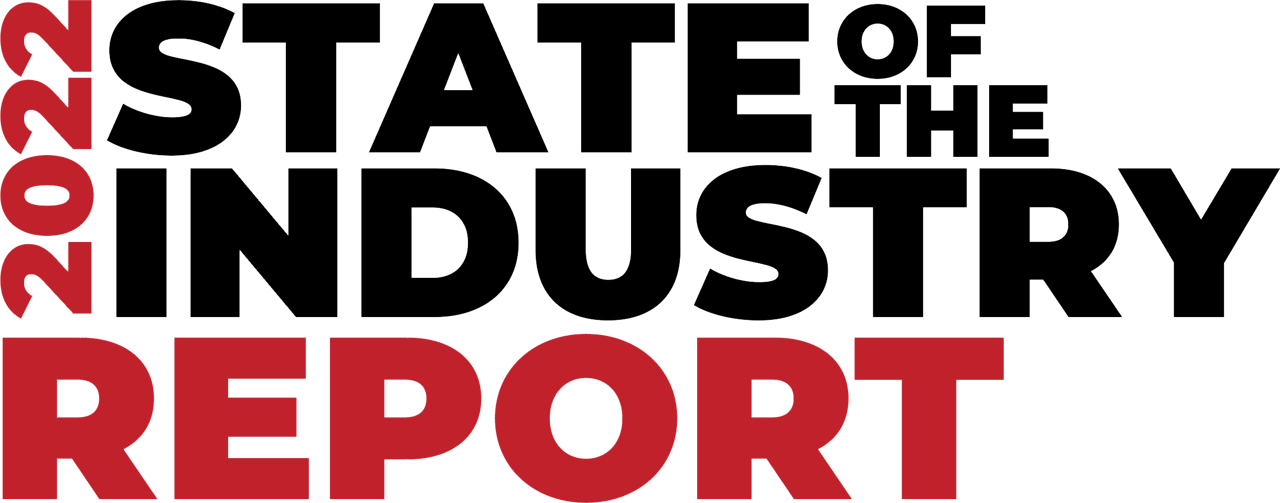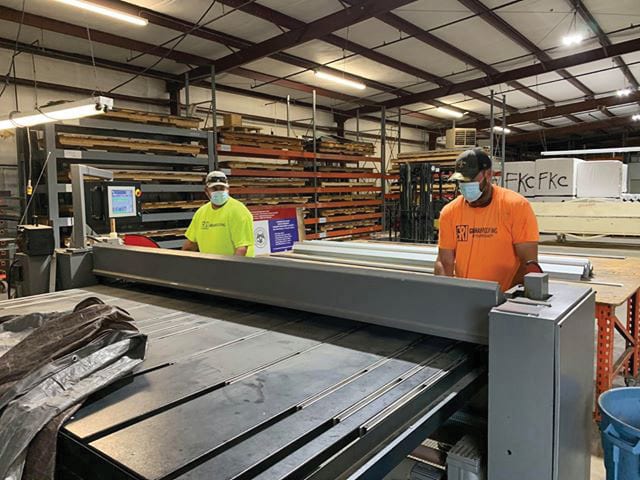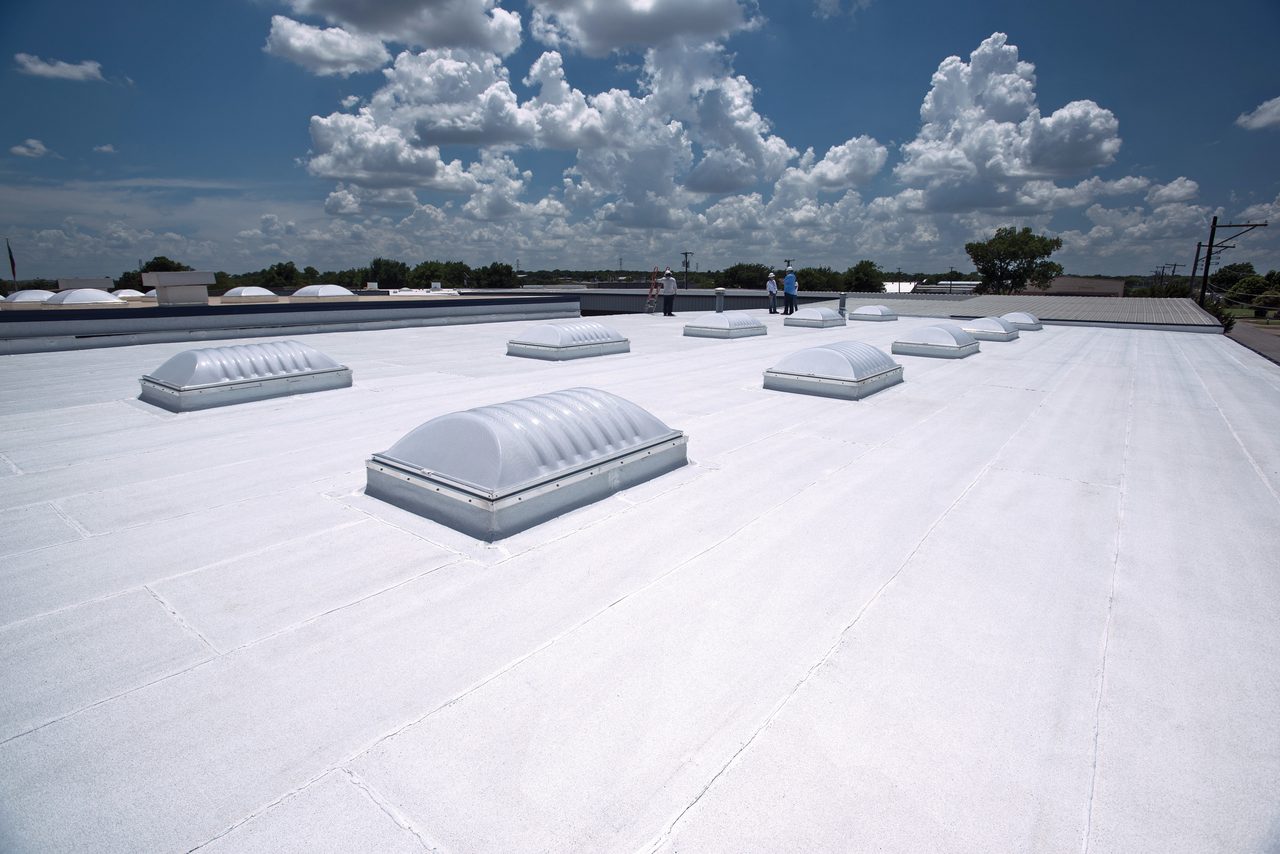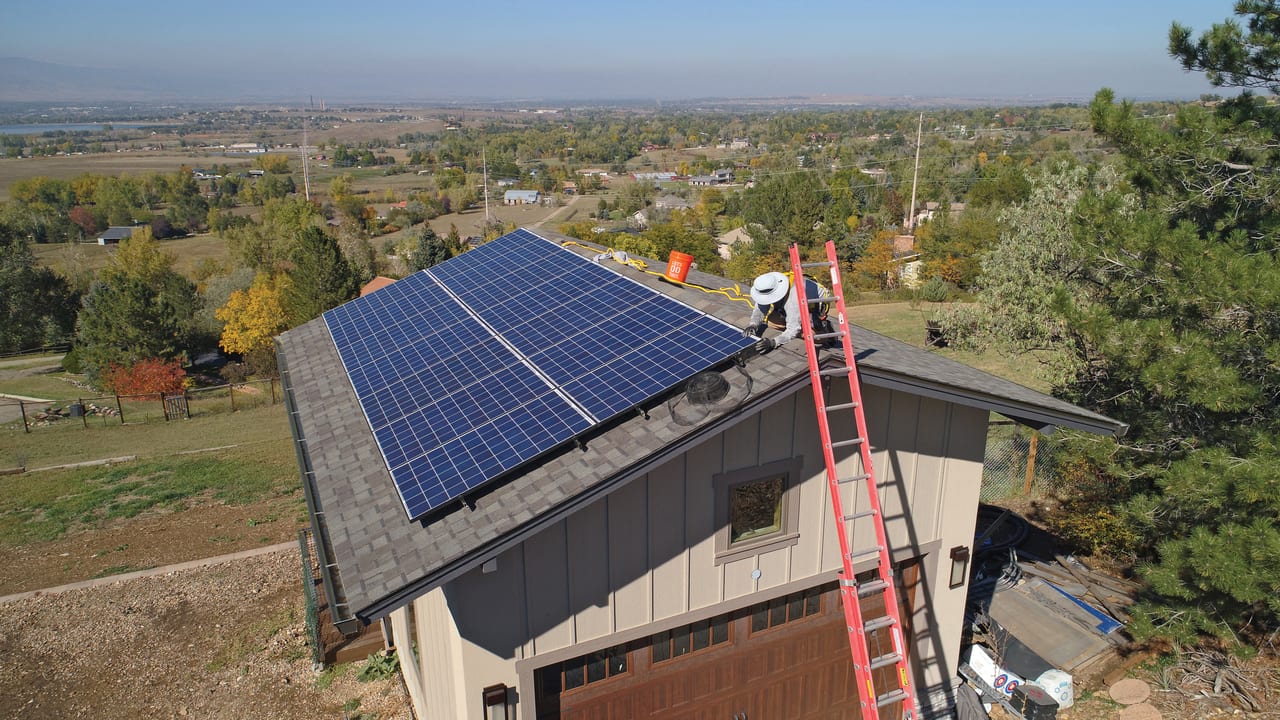


BY ART AISNER


Navigating a lethargic COVID-19 recovery nearly became an afterthought as the roofing industry’s supply crunch created a new set of problems lingering into 2022
Roofing contractors are generally an optimistic bunch, but the ebb-and-flow of 2021’s roofing market in North America challenged the psyche of even some of the most positive people in the business.
Continued health and safety concerns over new COVID-19 variants and vaccine mandates carried over from 2020 — forcing many to adjust crew operations and in some cases deal with the virus themselves.
Midway through the first quarter, industry leaders started chatting about job backlogs and the concerns they were beginning to see with dwindling inventories of roofing materials. And it was across the board, from ISO and insulation products, to fasteners and needed adhesives.
By the time roofing contractors in the commercial and residential sectors settled into Q2, those chats and whispers about supply-chain problems became screams. Not only were roofers hit with delayed deliveries, but prices and warranty costs started to accelerate, prompting difficult conversations with customers.
With that backdrop, RC again set out to gauge the pulse of the roofing industry heading into 2022 by asking questions that help assess the health of roofing, and identify some of the key trends and opportunities that can help guide contractors toward success.
Again with the expertise from BNP Market Research — the survey and research arm of RC’s parent company, BNP Media — RC circulated our annual survey to roofing contractors around the country last fall. The following 2022 State of the Industry Report, sponsored by our partners at Cotney Attorneys & Consultants, analyzes those responses and highlights the key findings. We encourage everyone to join RC and John Kenney, CEO of Cotney Consulting Group as we break down the data and explore what it means for 2022 in a webinar available on RoofingContractor.com.

Photo courtesy of Graham Roofing.
Demanding Times
Residential roofing remains in high demand in both cities and rural areas around the country.
Contractors that identified as primarily residential reported median 2021 revenue ranging from $500,000 to $4.9 million. A total of 14% reported revenue between $5 million and $9.9 million.
Another strong indicator of residential roofing health was 2021 sales. Roughly 59% of residential contractors said they expected annual sales to improve over 2020, and another 69% said they anticipate 2022 sales to increase. Roughly 28% said their 2021 sales remained the same, and 21% said they expect the same sales revenue this year. About 10% said sales dipped slightly, and 4% indicated a big drop last year. About 10% expect their 2022 sales to dip further than last year.
While seven in 10 expect residential roofing sales to increase over the next three years, maintaining that optimism may be a challenge. Particularly if roofers are coming up short on color variations and other features homeowners have come to expect because of supply chain issues. As many learned over the past year, being able to lock-in prices and manage production delays due to transportation or manufacturing issues is not a comfortable place to be.
“It’s amazing how fragile the supply chain really is and how much chaos can be created from issues in it,” said Zach Reece, COO of Atlanta-based Colony Roofers LLC. “The biggest struggle has been pricing work accurately in this environment. We lean into our estimating softwares to continue refining our process so we can stay efficient in updating proposals.”
Contractors in the South (69%) and Northeast (67%) said they expected residential sales to grow the most among respondents this year. About 76% in both regions anticipated growth in residential roofing over the next three years.
Reece said Colony’s business grew 40% year-over-year in 2021, but it was hardly enjoyable, as fears of workforce and dwindling inventory were always hanging overhead. He credited a robust marketing strategy and new key hires for meeting the challenge.
In response to the demand, manufacturers are also stepping up their game. Last month, Owens Corning announced it would invest millions of dollars into improving its network of shingle production plants this year and next, as well as make improvements to inventory to manage peak demand.
“We invest every year in process improvements and automation to increase the throughput at our manufacturing sites, but … we need to accelerate increased production capabilities to support growing demand,” said Owens Corning Roofing President Gunner Smith in a letter to roofing contractor partners.
With so much economic uncertainty out there, even veteran roofers are looking to each other through the creation of peer groups, or increased involvement in industry associations.
“At a time right now that’s so tough, these peer-to-peer relationships that you find within organizations like the Roofing Alliance are critical,” said Kelly Van Winkle, Meta Team co-founder and president and CEO of King of Texas Roofing Company. “The friendships that you make with your friendly competitors, the relationships with manufacturers — all come to be very, very important. And it’s not just the information sharing, but learning from each other and giving back to the industry. We are so fortunate, even with the tough times.”
Metal Marketplace
Roof replacements remained the main source of revenue for residential roofing contractors at 33%, with roof repairs and new construction hovering between 13%-14%, the data showed. While steep-slope asphalt shingles continue to hold a dominant position in the residential space (77% usage), a closer look into product involvement data revealed that metal roofing slightly exceeded it for the first time (78%).
That said, metal roofing only accounted for about 18% of residential contractors’ share of overall sales. That leaves the marketplace ripe with opportunity, said Renee Ramey, executive director of the Metal Roofing Alliance.
“Now is the perfect time to get involved (in metal roofing),” she explained. “The shortage of installers is hindering growth in many areas as there are simply not enough contractors to cover homeowner demand. In addition, the profit margins for metal roofing are on average higher than with most other roofing options.”
Merge those factors with increased severe weather events like Hurricane Ida and the late-season tornadoes that devastated Kentucky and other parts of the Midwest in 2021, the effect of climate change is clear.
“Couple the desire for more sustainable roofing options and the better long-term value that metal roofing offers, and you’ve got a hot market with no end in sight,” she said.
Industry advocates said that more than 2 billion square feet of metal roofing was installed over the past four decades in the United States, and that number continues to grow faster than any other roof type except asphalt shingles.
The value proposition of putting on a roof meant to last twice as long — or longer — than a traditional asphalt roof is beginning to resonate with homeowners.
“Today’s trends point toward evaluating the long-term costs of owning a roof,” said Rob Haddock, CEO and founder of S-5!, and director of the Metal Roof Advisory Group. “The life-cycle costs and environmental appeal of metal truly offer many advantages. With escalating labor issues, the value of a material that lasts three or four times as long is much more relevant.”
On average, shingles accounted for 30% of the contractors’ revenue. Around 55% of residential contractors said they saw increases in metal sales from 2020 to 2021, while 62% said they expect those sales to grow this year.
Commercial Craft
As RC broke down in its 2021 Commercial Roofing Report, the year began with near-recession like economic conditions for commercial roofers. The prolonged COVID-19 recovery kept new project sales low and led to production delays only enhanced by the supply shortages, which may have hit the commercial roofing sector hardest.
Price increases and project delays were the norm in every commercial market across the country, and contractors had to spend as much or more time renegotiating sold contracts to include price escalators and other legal protections, as they did generating new work.
The good news for most roofers nimble enough to adjust was that sales remained strong.
About two-thirds (67%) of respondents expected an increase in overall sales volume for the year compared to 2020. The majority of those (54%) expected a slight increase, and 17% indicated sales should remain the same. Roughly 16% said sales dropped this year.
While an increasing sales trend is no surprise given the positive-trending data RC collected over the past 10 years, it should be noted that this year’s survey data stood out. Roofing contractors kept the momentum going through a major shift in business processes. Sales once closed at the board room, networking events or the golf course were no longer as safe, or desired, by facility owners or managers in 2021. Adapting to a digital sales process, scaling it and perfecting it to enhance the customer experience proved crucial.
Industry technology providers made adjustments as well as they tried to find ways to support roofing contractors in this new environment of limited contact.
“In 2020, we saw more roofing contractors turn to technology, and this remained true throughout 2021. It’s really become a necessity as opposed to something that’s nice to have,” said Lynn Foster, director of operations at AccuLynx. “We also saw roofers looking for new ways to sell.”
That also meant broadening options for financing and online payment plans.
The survey data suggests that the number of contractors concerned about overall future sales appears low. About 79% said they expect a slight to great increase in 2022 total sales volume compared to last year. Specifically, more than three-fifths of respondents expect single-ply, metal and coatings to grow this year, while sales on most other commercial roofing products should remain consistent. About 85% said they expect increases in total sales volume over the next three years, the data showed.
The top products commercial roofers expect to sell are single ply (90%), followed by metal (81%). Low-slope asphalt (65%), coatings (60%), and steep-slope asphalt shingles (58%) rounded out the top five. Looking closer, roofers preferred TPO (47%), followed by EPDM (32%) and PVC (13%). In terms of low-slope asphalt work, modified bitumen-SBS generated 38% of all sales; built-up roofing hovered around 30% and modified bitumen-APP accounted for 26%.
About 47% of respondents indicated that metal roofing sales increased this year; 39% said sales held steady; and roughly 13% indicated a drop.
National tariff policy and raw material prices could hurt the metal market in 2022, but contractors are getting savvy enough to work with alternatives. More than half of respondents (60%) indicated they used coatings, and nearly 52% said coatings sales improved in 2021. Another 41% said sales remained the same.
The outlook for the future appears good for contractors using coatings. About 56% said sales would increase this year, and another 50% said they expect spray foam sales to increase, too.
Coatings are one example where the lessons of 2021 should improve market conditions going forward. Huntsman Building Solutions spent a good part of the year investing in newer technologies, diversifying its product portfolio, and building a larger inventory capacity for raw materials, said David Feitl, vice president of global roofing and Western USA SPF sales.
He said the Texas freeze last February taught them how crucial relying on one location can be for production. The weather event crippled chemical production from the Gulf of Mexico to the Northeast, and Feitl said the company will now blend and produce its high-performance roofing, coating and building envelope materials in multiple locations.
“The Texas freeze essentially shut down our coatings division for some months and it was a challenge to keep up with product demand,” he said. “That showed us we need to manufacture all product lines in multiple locations.”

Photo courtesy of Polyglass.
Changing Priorities
In 2020, RC’s survey data showed that lowball pricing and bidding wars, increased building material costs and a lack of qualified workers were the leading perceived challenges for residential and commercial roofers alike. Yet, concerns over those factors didn’t measure up to reach half of respondents.
Last year, concerns over increased building material costs skyrocketed to 71% of all respondents, followed by lack of workers (49%) and supply chain shortages (46%). Lowball pricing and government regulations sunk to 27% and 20%, respectively, and safety enforcement plummeted to 11% of perceived challenges in roofing.
Health and safety concerns over COVID-19 (70%) and recruiting new employees (64%) topped the list of workforce challenges over the past year, the data showed. Project delays (32%) and material costs (21%) showed the strongest impact from the supply-chain shortages. About 23% of contractors said the supply shortages had little or no impact.
Blue’s Roofing, in Milpitas, Calif., was not among those so fortunate to avoid the business effects. However, focusing on what factors employees could control was the best path forward, said Vice President Leo Ibarra.
“Realistically, there is not much you can do,” he said. “We needed to communicate and be more proactive on our jobs.”
He recalled a conversation with one manufacturer that summed it all up.
“He stated this was the first time they couldn’t shift jobs to accommodate customers,” Ibarra said. “It was the first time that he had to say there’s absolutely nothing he could do to expedite your order quicker.”
Suppliers had their own difficult conversations, too. It was challenging to predict lead times, execute orders efficiently, and in some cases, even find the materials roofers needed.
“It was more important than ever that we worked with key suppliers and kept our lines of communication open,” said Mike Jost, COO of ABC Supply Inc. “Our customers can deal with almost anything if we are open with them, keep them informed and in many cases offer them options when ‘business-as-usual’ is impossible.”

Photo courtesy of Interstate Roofing.
Tech Crunch
The influx of technology into the roofing marketplace, and its impact on vital business elements like lead generation and operational efficiency, can’t be denied. The sudden demand for touchless solutions amid the pandemic also created new sales techniques for some contractors willing to pivot and implement new systems.
Estimating software and enterprise or accounting software were the most commonly used tech products that contractors currently use, at 64% and 50%, respectively. Another 32% of respondents said they plan to add or upgrade their estimating software by year’s end. Drones (43%), aerial measurement (42%), and customer relationship management software (41%) completed the top five.
Two-fifths of respondents said their companies currently use drones on about 42% of their roofing projects. They’re primarily used for marketing and capturing a project’s progress over time, but a significant amount (81%) also listed inspections as a drone business function. Drone use is also expected to increase, as 31% said they planned to add the service in 2022, and another 30% indicated they were on a two-year plan. Further drone data shows that the majority of contractors using them (71%) own the drones. Another 25% are owned by individuals, and just 4% are rented or leased, the data showed.

Photo courtesy of Sutter Roofing.
Big Billions
This year may the first one in history where the roofing industry could boast two billion-dollar roofing companies. CentiMark Corp. was the first to break the $1 billion barrier in sales revenue just before the end of 2021. A surge in sales, despite the difficulties outlined above, helped deliver founder Edward Dunlap’s 27-year-old dream a year ahead of schedule.
Company officials said they did it by taking the time to really listen to their customers.
“I think the sign of a really well-managed company is how that company reacts to those challenging situations,” said John Godwin, CentiMark’s vice president of marketing and sales. “The really important thing is, we went out and we spoke with our customers and asked them how their business was being affected.”
Some customers benefited and their business jumped because of pandemic conditions, and others suffered.
“We were smart enough to really understand what was going on from a customer perspective and react accordingly,” he said. “We had to balance what our offering was to those different customers, so that we could fit their specific needs.”
It likely didn’t hurt that another company was right behind them in chasing roofing’s billion-dollar mark.
In 2021, Tecta America acquired Texas-based Empire Roofing, RC’s 2020 Commercial Roofing Contractor of the Year, and Childers Roofing & Sheetmetal in Jacksonville, Fla. Adding both perennial Top 100 roofing companies nearly pushed Tecta’s total sales revenue for the year to the limit.
“We’ve been at this for a long time, and if it weren’t for the supply-chain issues we’d be over that mark,” Tecta President and CEO Dave Reginelli told RC in October.
Plans for further acquisitions are in the works, he added.
“Tecta’s going to be here forever. We have the training and the scale to develop the next generation of roofing contractors, and we’re not looking for sellers, we’re looking for partners. We live that.”
Contractors weren’t the only industry stakeholders making notable, billon-dollar sales just before year’s end. Oregon-based Malarkey Roofing Products sold to Holcim for $1.35 billion cash in a deal expected to be approved in the first quarter of the year. The deal follows Holcim’s $3.4 billion acquisition of Firestone Building Products last April to become a global leader in both commercial and residential roofing systems.
“With Malarkey Roofing Products we enter the highly profitable and fast-growing residential roofing market, driven by repair and refurbishment as well as shifting customer preferences towards more sustainable and resilient building materials,” said Jamie Gentoso, Holcim’s global head of solutions and products. “With a track record of double-digit growth for the past 10 years, Malarkey is a proven growth engine for expanding our range of roofing systems from commercial to residential.”
Consolidations also continued in distribution, a long-term trend the business has seen increase since 2015.
US LBM continued its growth with more than a dozen different acquisitions throughout the year, and both SRS Distribution and Beacon announced expansions in recent months.
In October, SRS acquired Wimsatt Building Materials, an 86-year-old Michigan-based company with eight locations in the state and in neighboring Ohio. In early January, Beacon announced the acquisition of Crabtree Siding and Supply, a wholesale distributor of residential exterior building materials located in Cookeville, Tenn., strategically nestled between the Nashville and Knoxville markets.
Beacon also sold its solar products business consisting of four dedicated and six shared branches in December.
Industry giant ABC Supply didn’t sit idly by, continuing its national expansion by opening eight new locations and acquiring three companies throughout the year.
Smaller suppliers also seized growth opportunities, including Illinois-based Richards Building Supply Co., which purchased Dayton, Ohio-based SIBCO Building Products.
Last month, Gulfeagle Supply announced its second expansion in 30 days with the acquisition of 24 locations from R&S Supply. The company also added a second and third location in the Chicago area by acquiring Quality Building Supply.
The economic climate for roofing contractors and the companies that equip them continues to invite further consolidation. That may work well for larger firms, but there is concern out there that smaller companies will feel significant pain if the supply-chain issues don’t improve early in the year.
There’s no quick-fix or bail out coming for the construction trades. Yet, this year’s survey data shows there are positive signs to grasp onto, particularly when considering the adoption of technology and innovation seen in the past two years.
Jost is among those optimists that sees a future of possibilities for 2022.
“The industry is full of potential,” he said. “Many are predicting growth in the industry as demand increases. Technology adoption increased sharply over the last two years, and we’re looking forward to more innovation in that space. We’re beginning 2022 with a lot of momentum.”
The information contained within this article comes from: Clear Seas Research. 2022 Roofing Contractor State of the Industry Report. Nov. 2021. Clear Seas Research is a full service, B-to-B market research company focused on making the complex clear. Custom research solutions include brand positioning, new product development, customer experiences and marketing effectiveness solutions. Clear Seas offers a broad portfolio of primary, syndicated research reports and powers the leading B-to-B panel for corporate researchers, myCLEARopinion Panel, in the architecture, engineering, construction, food, beverage, manufacturing, packaging and security industries. Learn more at clearseasresearch.com.
Art Aisner is editor of Roofing Contractor. Reach him at 248-244-6497 or aisnera@bnpmedia.com.